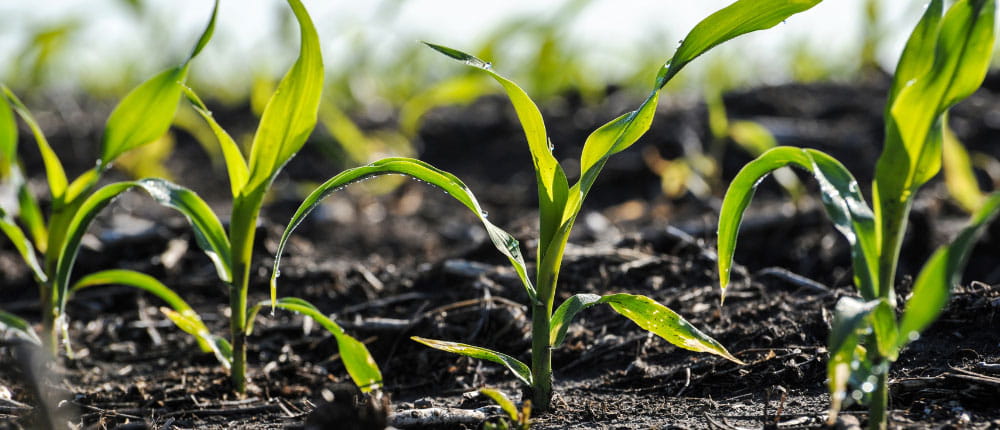Soon after emergence (VE), corn seedlings develop nodal roots, which are the primary source for water and nutrient uptake for the plant. If these roots are stressed or impeded by wetness, cold soils, insects or diseases, corn plants will lack the basic nutrients needed for optimal growth. When plants lag behind, they will likely not catch up and suffer yield loss.

Applying a starter fertilizer can give crops the strong start they need by providing roots with the available nutrients they need, lessening overall plant stress. Starter fertilizers are a common tool in the northern and central corn belt, but there are significant benefits for corn growers across the U.S.
Whether you’ve used starter fertilizer for years or are exploring it as a new option this year, here are five things to know about starter fertilizer:
1. A little goes a long way
Since starter fertilizer is applied in-furrow or near furrow, high concentrations are not needed because the roots are right there where the fertilizer is placed, making nutrients readily accessible to the young roots.
2. Rapid early season growth and crop uniformity
Low temperatures and wet soils in the spring can limit the microbial activity and mineralization process needed to supply seedlings with critical nutrients. In areas like the upper Midwest where the soils are cold and wet during planting, starter fertilizer can help lessen seedling stress by providing available nutrients to the roots to start crops off with an even stand.
3. Stronger, healthier plants and higher yield potential
Not only will starter fertilizer help with seedling vigor to withstand adverse conditions after planting, but it also sets up the plant for earlier flowering and crop maturity which can result in improved yield especially in years of early frost in the fall as well as lower grain moisture at harvest.
4. Ability to add micronutrients
Whether adding plant growth regulators, biostimulants or micronutrients like zinc and manganese to starter fertilizer, add-ins have a synergistic effect for better overall results compared to using one or two nutrients alone.
5. Increased fertilizer efficiency
By providing N, P and K right where the plant needs it, starter fertilizer makes the nutrients available for efficient uptake. However, in soils with high cation exchange capacity (CEC), high or low soil pH and low organic matter, nutrients in the soil or in applied fertilizer can become tied up in the soil and unavailable to the plan. To achieve maximum efficiency in those conditions, retailers and growers may also consider adding a chelated fertilizer efficiency product like Levesol Zn to increase nutrients solubility and availability for plant uptake.
Learn more about crop nutrients or contact your CHS Agronomy representative for more information.




